1941 half dollar coin values range from $17-$50 for circulated pieces to $55-$675+ for uncirculated specimens, depending on mint mark and condition. Coins were minted in Philadelphia (no mint mark), Denver (“D”), and San Francisco (“S”), with the 1941-S version typically commanding premium prices in uncirculated grades. Error coins with features like over-polished surfaces, softened details, or missing serifs can dramatically increase value, with top-grade examples reaching tens of thousands at auction. Condition remains the most critical value factor, followed by mint mark and the presence of valuable errors.
That 1941 Walking Liberty half dollar tucked away in your collection might be worth significantly more than fifty cents. Depending on its mint mark, condition, and any potential errors, your coin could be valued anywhere from seventeen dollars to several hundred dollars, with rare error specimens reaching into the tens of thousands. Understanding what makes these 82-year-old coins valuable can help you determine whether you’re holding common silver or a numismatic treasure.
Understanding the Three 1941 Half Dollar Varieties
The United States Mint produced Walking Liberty half dollars at three facilities in 1941, each leaving a distinctive mark on the coins they produced. Philadelphia struck 24,192,000 pieces without any mint mark, making it the most common variety. Denver produced 11,248,400 coins marked with a “D” on the reverse, while San Francisco minted 8,098,000 pieces bearing an “S” mint mark. You’ll find these tiny letters on the reverse side of the coin, positioned just below the branch that the eagle is perched upon.
The Philadelphia coins, lacking any mint mark, represent the largest portion of surviving specimens today. However, production numbers alone don’t determine value. The San Francisco issue, despite having the lowest mintage, often commands similar prices to the other varieties in circulated grades. The real value differences emerge when examining coins in uncirculated condition, where preservation and eye appeal become paramount factors in determining market price.
Current Market Values Across Grades
Circulated 1941 half dollars from any mint typically trade between seventeen and fifty dollars, with the exact price depending on how much wear the coin shows. A heavily worn piece grading Good-4 might fetch seventeen to twenty dollars, primarily for its silver content and basic collectibility. Fine-12 specimens with moderate wear generally bring twenty-five to thirty-five dollars, while About Uncirculated-50 coins showing only slight friction on the highest points can command forty to fifty dollars.
The uncirculated market tells a different story entirely. Mint State-60 examples, showing no wear but possessing numerous bagmarks or lackluster surfaces, start around fifty-five to seventy dollars for Philadelphia and Denver issues. San Francisco coins in the same grade begin at approximately sixty-five dollars. Moving up the grading scale, MS-63 specimens range from ninety to one hundred fifty dollars depending on strike quality and luster.
Premium uncirculated examples represent where serious money changes hands. An MS-65 1941 Walking Liberty half dollar from any mint typically sells between three hundred fifty and five hundred fifty dollars. The finest known examples in MS-67 condition have sold at Heritage Auctions for prices ranging from two thousand to six thousand seven hundred fifty dollars, with exceptional specimens occasionally surpassing these figures when eye appeal and strike quality align perfectly.
| Grade | Philadelphia (No Mark) | Denver (D) | San Francisco (S) |
|---|---|---|---|
| Good-4 | $17-20 | $17-20 | $18-21 |
| Fine-12 | $25-30 | $25-30 | $27-32 |
| AU-50 | $40-48 | $42-50 | $45-52 |
| MS-60 | $55-70 | $58-72 | $65-80 |
| MS-63 | $90-130 | $95-135 | $110-150 |
| MS-65 | $350-500 | $375-525 | $425-550 |
| MS-67 | $2,000-5,500 | $2,200-6,000 | $2,800-6,750 |
Valuable Errors That Command Premium Prices
Several distinct error types can transform an ordinary 1941 half dollar into a significant find. The most documented error involves over-polished dies that removed fine details from Liberty’s gown and the eagle’s feathers. These weakly struck coins aren’t necessarily valuable unless combined with other desirable characteristics, but they’re worth identifying since some collectors specifically seek interesting die states.
A more significant error appears on certain 1941-S specimens where the mint mark was punched multiple times, creating what numismatists call a repunched mint mark. Under magnification, you’ll see doubling or tripling of the “S” mint mark, with some showing the letter shifted slightly in different directions. Depending on the severity and clarity of the repunching, these varieties can add fifty to two hundred dollars to the coin’s base value in uncirculated condition. A clear, dramatic repunched mint mark on an MS-65 coin sold at Stack’s Bowers for nine hundred seventy-five dollars in 2022.
Die cracks and cuds represent another collectible error category. A die crack appears as a raised line on the coin’s surface, caused by a fracture in the die that struck it. These typically add modest premiums of ten to thirty dollars unless they’re particularly dramatic. Die cuds, where a piece of the die broke away entirely, leaving a raised blob of metal on the coin, are rarer and more valuable. A 1941-D half dollar with a significant cud covering part of the date sold through GreatCollections for four hundred twenty dollars in AU-58 condition.
The most valuable error reported on 1941 half dollars involves off-center strikes, where the planchet wasn’t properly centered in the press when struck. Minor off-center errors of five to ten percent might add one hundred to three hundred dollars to the coin’s value. Dramatic off-center strikes showing twenty-five to forty percent of the design missing while retaining a full date can command fifteen hundred to three thousand dollars. A 1941 Philadelphia half dollar struck thirty-five percent off-center with full date realized two thousand eight hundred seventy-five dollars at Heritage Auctions in 2021.
Identifying Genuine High-Grade Specimens
Distinguishing truly uncirculated 1941 half dollars from cleaned or artificially enhanced coins requires careful examination. Genuine mint luster appears as a cartwheel effect when you rotate the coin under a single light source, with bands of light seeming to roll across the surfaces. This luster results from microscopic radial flow lines created during the striking process and cannot be replicated through cleaning or polishing.
Walking Liberty half dollars are notorious for weak strikes, particularly at the center of Liberty’s gown and the eagle’s breast feathers. Even coins that never circulated may show softness in these areas due to insufficient striking pressure or worn dies. When examining a potential uncirculated coin, use a magnifying glass to inspect Liberty’s left hand and the area around her waist. You should see complete separation between the fingers and sharp folds in the fabric if the coin truly grades MS-63 or higher.
Bagmarks present another consideration when evaluating condition. These small nicks and scrapes occurred when coins contacted each other in mint bags during storage and transportation. A few scattered bagmarks are acceptable on coins grading MS-63, but they should be minor and not located in prominent focal areas like Liberty’s face or the eagle’s head. By MS-65, bagmarks should be minimal and difficult to spot without magnification. Coins grading MS-67 show virtually no contact marks visible to the naked eye.
Where These Coins Trade Above Melt Value
The silver content in a 1941 half dollar provides a price floor below which the coin won’t typically sell. Each piece contains 0.36169 troy ounces of pure silver, giving it a melt value that fluctuates with silver spot prices. At twenty-three dollars per ounce, the silver alone is worth approximately eight dollars and thirty cents. However, even heavily worn 1941 half dollars consistently trade for seventeen to twenty dollars because collector demand exceeds the number of survivors in collectible condition.
Professional Coin Grading Service population reports reveal why uncirculated examples command such premiums. Of the millions minted in 1941, PCGS has certified only eight hundred forty-three Philadelphia coins in MS-66 or higher as of 2024. Denver issues show similar scarcity with seven hundred ninety-two pieces certified at that level. San Francisco coins are slightly rarer with six hundred thirty-one graded MS-66 or better. These numbers represent decades of submissions, demonstrating that gem-quality survivors are genuinely scarce.
The market for 1941 half dollars remains robust through multiple channels. Local coin shops typically stock circulated examples and occasionally have uncirculated pieces available. Online marketplaces like eBay show completed sales ranging from nineteen dollars for worn specimens to several thousand for premium mint state coins. Major auction houses including Heritage, Stack’s Bowers, and GreatCollections regularly feature 1941 half dollars in their sales, with the finest examples often appearing in their premier auctions where serious collectors compete aggressively.
Authentication and Grading Services Worth Using
Submitting your 1941 half dollar to a third-party grading service makes sense when you believe it grades MS-64 or higher, or if it displays a significant error. The two most respected services are Professional Coin Grading Service and Numismatic Guaranty Company. Both use the standard seventy-point Sheldon scale, encapsulate coins in tamper-evident holders, and maintain population reports tracking how many coins they’ve graded at each level.
PCGS charges thirty dollars for their standard service tier, which works well for coins valued between one hundred and fifteen hundred dollars. Their turnaround time typically runs four to six weeks. NGC offers similar pricing at twenty-eight dollars for their standard tier. Both services charge additional fees for faster service, with express options completing in ten business days for seventy-five to one hundred dollars extra. If you have multiple 1941 half dollars to submit, both companies offer volume discounts when you send five or more coins at once.
For coins you believe might grade MS-66 or higher, or those displaying dramatic errors, consider using the gold shield tier at PCGS or the star designation option at NGC. These premium services provide additional authentication scrutiny and designate coins with exceptional eye appeal, which can add twenty to forty percent to the market value. A 1941-S graded MS-66+ with a gold CAC sticker sold for seven thousand two hundred dollars in 2023, while an MS-66 without the sticker brought only four thousand eight hundred dollars.
Building Your Half Dollar Collection Strategically
Starting a 1941 half dollar collection offers an accessible entry point into Walking Liberty numismatics without requiring enormous capital. You can acquire all three mint marks in circulated condition for under one hundred fifty dollars, creating a representative set that demonstrates the series. Many collectors begin here, then gradually upgrade to higher grades as budget allows.
An intermediate collecting goal might involve assembling all three mints in MS-63 condition, which currently requires approximately three hundred to four hundred fifty dollars depending on where you purchase. This level provides coins with full mint luster and sharp details while remaining affordable for most collectors. You’ll notice significant quality differences compared to circulated pieces, making the upgrade rewarding from both aesthetic and investment perspectives.
Advanced collectors often pursue registry sets through PCGS or NGC, competing to assemble the finest known examples of each date and mint mark. For 1941 specifically, achieving an average grade of MS-66 across all three mints currently places a set in the top fifteen percent of registered collections. The cost approaches fifteen thousand to twenty thousand dollars for coins that meet this standard, but the pursuit provides engagement with the competitive aspects of numismatics.
Protecting Your Investment for Future Value
Proper storage significantly impacts whether your 1941 half dollar maintains or loses value over time. Never clean your coins under any circumstances, as even gentle cleaning removes microscopic surface metal and destroys the original mint luster that grading services and collectors prize. A cleaned coin that might otherwise grade MS-64 will be designated as “cleaned” or “altered surfaces” and trade for thirty to fifty percent less than a problem-free example.
Store your coins in inert holders specifically designed for numismatic preservation. Avoid PVC-containing flips, which were common decades ago but release chemicals that cause green corrosion spots over time. Modern Mylar flips, cardboard two-by-twos with Mylar windows, or professional grading service holders provide safe long-term storage. Keep your collection in a stable environment away from temperature extremes and humidity, which accelerate toning and potential corrosion.
Insurance becomes worthwhile once your collection exceeds five hundred to one thousand dollars in value. Standard homeowners or renters insurance typically provides limited coverage for collectibles, often capping claims at five hundred to one thousand dollars total. Specialized collectibles insurance through companies like Hugh Wood or American Collectors Insurance offers agreed-value coverage, meaning they’ll pay the amount you insured the coin for rather than arguing about current market value after a loss. Rates typically run one to two percent of the insured value annually.
Maximizing Returns When Selling Your Coins
Timing your sale strategically can significantly impact the price you receive for 1941 half dollars. The numismatic market traditionally shows strength in January through April when collectors receive tax refunds and annual bonuses, with another active period in November through December as collectors make year-end purchases. Summer months typically see softer demand and lower prices, though exceptional coins sell well regardless of season.
Choosing the right selling venue depends on your coin’s grade and your timeline. Local coin shops offer immediate payment but typically buy at fifty to seventy percent of retail value since they need profit margin for resale. This works well for circulated coins or when you need quick cash. Online marketplaces like eBay expose your coin to thousands of potential buyers but involve fees of thirteen to fifteen percent and require effort photographing, listing, and shipping the item.
Consigning to a major auction house makes sense for coins grading MS-65 or higher, or those with dramatic errors. Heritage Auctions, Stack’s Bowers, and Legend Rare Coin Auctions charge seller fees ranging from ten to twenty percent depending on the hammer price, but they attract serious collectors willing to pay market-appropriate prices for quality material. A well-photographed, accurately described 1941-S in MS-66 condition will likely bring within five percent of its fair market value at auction, while the same coin offered at a local shop might fetch only sixty percent of its true worth.
Growing Your Numismatic Knowledge Base
Understanding what makes your 1941 half dollar valuable starts with quality reference materials. “A Guide Book of Walking Liberty Half Dollars” by Bruce Fox provides comprehensive information on varieties, errors, and market values specific to this series. The book includes high-resolution photographs showing the differences between various die states and helps collectors identify the characteristics that separate common coins from valuable varieties.
Online resources complement printed references effectively. The PCGS CoinFacts website offers free access to images of coins at various grade levels, helping you calibrate your eye for condition. Their population reports show exactly how many coins have been certified at each grade level for each mint mark, providing context for rarity. NGC’s price guide updates weekly based on actual market transactions, giving you current rather than outdated values.
Joining the American Numismatic Association provides access to their extensive digital library, including decades of “The Numismatist” magazine with articles about Walking Liberty half dollars. Their online forums connect you with experienced collectors who can answer specific questions about your coins. The one hundred dollar annual membership fee includes fifty dollars in numismatic literature credits, discounts on grading service submissions, and access to their annual conventions where you can examine world-class collections firsthand.
Making Your Next Acquisition Count
Whether you’re buying your first 1941 half dollar or adding to an established collection, focusing on quality over quantity yields better long-term results. A single MS-65 coin will likely appreciate more over five to ten years than five MS-63 specimens costing the same total amount. The finest examples of any coin tend to hold value better during market downturns and appreciate faster during upward trends because demand consistently exceeds the limited supply of top-grade pieces.
When purchasing raw, ungraded coins, insist on a return privilege if the coin doesn’t grade as expected. Reputable dealers typically offer three to seven day return periods for coins sold as uncirculated but not yet certified. Take advantage of this by immediately submitting valuable purchases to PCGS or NGC. If the coin grades lower than represented, you can return it. This approach protects you from overpaying for a coin that proves to be AU-58 when you thought you were buying MS-63.
Consider building relationships with established dealers who specialize in early silver coins. These professionals see thousands of Walking Liberty half dollars annually and can alert you when exceptional pieces become available before they’re advertised publicly. Many dealers offer preferred pricing to repeat customers, potentially saving ten to fifteen percent compared to one-time buyers. The knowledge you’ll gain from conversations with experienced dealers often proves as valuable as the coins themselves, helping you develop the expertise to make better independent decisions over time.
You may be interested:
- 1859 Indian Head Penny Coin Value Complete Errors List And No Mint Mark Worth Guide For Collectors
- 1911 V Nickel Coin Value Guide Complete Errors List And No Mint Mark Worth Today
- 1902 Dime Coin Value Complete Errors List With O S And No Mint Mark Worth Guide
- 1788 Quarter Coin Value Complete Guide Errors List And D S P Mint Mark Worth Revealed
- 1776 To 1976 Bicentennial Half Dollar Coin Value Complete Errors List And What Your D S And No Mint Mark Coins Are Actually Worth
- 1990 Penny Coin Value Errors List How D S And No Mint Mark Pennies Are Worth Thousands Of Dollars

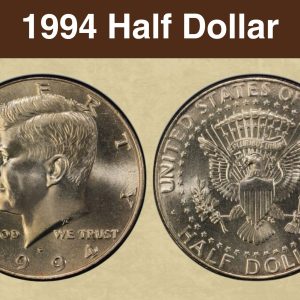
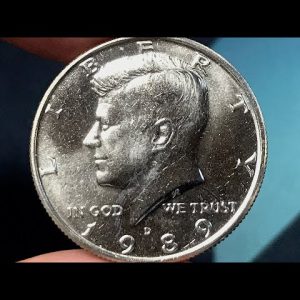
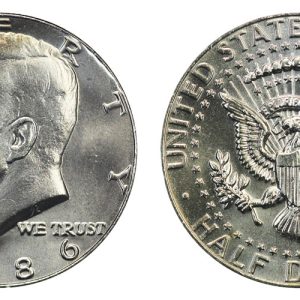
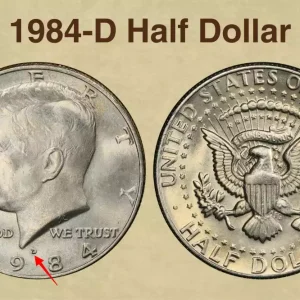
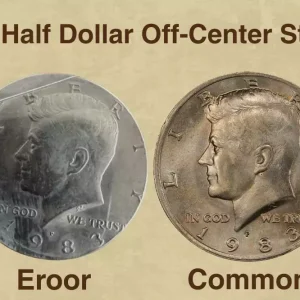
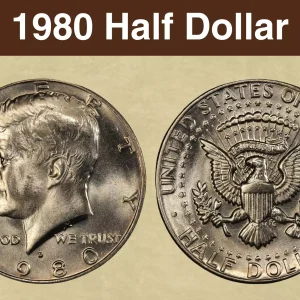
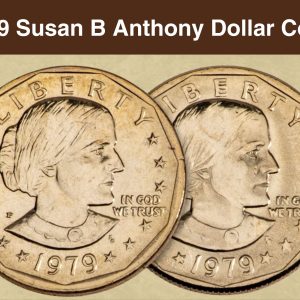
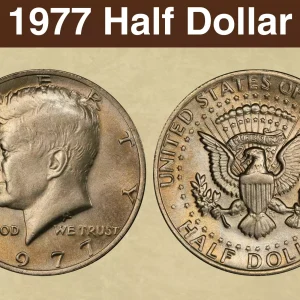
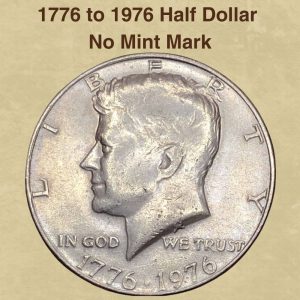
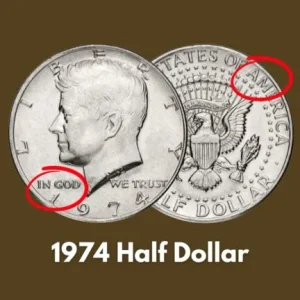
How much is a 1941 half dollar worth with no mint mark?
A 1941 half dollar with no mint mark is from the Philadelphia Mint and is worth from about $17 to $50 for circulated coins, and can range from $55 to over $675 for uncirculated coins, depending on the grade. The value depends heavily on the coin’s condition, with high-grade and uncirculated examples fetching higher prices.
How much is a 1941 No mint Nickel worth?
A 1941 nickel with no mint mark is a common coin, typically worth about $0.25 to $0.50 in circulated condition. Values increase for coins in better condition, with “uncirculated” or “mint state” examples ranging from approximately $5 to $15, and rare errors or high-grade coins potentially fetching higher prices.
Where is the mint mark on a 1941 Liberty half dollar?
The mint mark on a 1941 Walking Liberty half dollar is on the reverse side (the eagle side), located to the lower left, beneath the olive branch. For coins minted at Denver, you will see a “D” for Denver, and for coins minted at San Francisco, you will see an “S” for San Francisco. The Philadelphia Mint did not use a mint mark on their coins, so they have no mark at all.
How to tell if you have a rare Kennedy half dollar?
These Accented Hair coins often show overly polished fields, softened devices, and extra hairlines, which may have been a response to early die wear. The lower left serif of the letter “I” in LIBERTY is typically missing, and the obverse appears subtly altered overall.